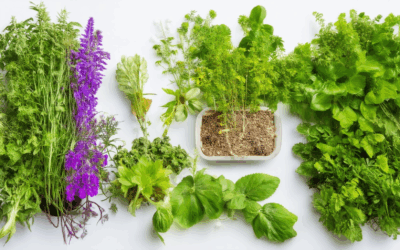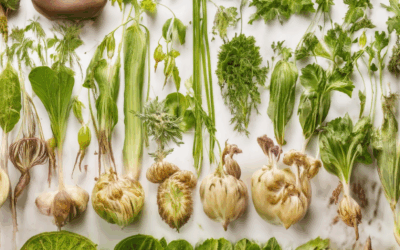Heirloom seed varieties have gained significant popularity among gardening enthusiasts and food lovers due to their unique characteristics, rich history, and superior taste. These seeds, passed down through generations, offer a treasure trove of rare and diverse options that cater to both culinary enthusiasts and environmental stewards. Unlike hybrid seeds, heirloom varieties often retain their original traits, resulting in fruits, vegetables, and flowers that exhibit distinct flavors, colors, and growth patterns. While they may require more attention and care, heirloom seeds are celebrated for their resilience, nutritional density, and ability to adapt to various climates. In this comprehensive guide, we delve into the world of heirloom seed varieties, exploring their benefits, challenges, and the best ways to grow and enjoy them. From understanding the differences between heirloom and hybrid seeds to discovering the most sought-after rare varieties, this article provides everything you need to know to embrace the unique charm of heirloom seeds.
Understanding Heirloom and Heritage Seeds
Heirloom and heritage seeds are both types of seeds with rich histories, but they have distinct characteristics and backgrounds. Understanding the differences between them can help you choose the right seeds for your garden.
What Are Heirloom Seeds?
Heirloom seeds are open-pollinated plants that have been passed down through generations. These seeds are typically heirloom varieties that have been carefully preserved and nurtured over time. Heirloom seeds are known for their unique traits, such as vibrant colors, interesting shapes, and distinctive flavors. They are often chosen for their ability to produce large, healthy crops and for their resistance to pests and diseases.
What Are Heritage Seeds?
Heritage seeds, while similar to heirloom seeds, may carry a slightly different connotation depending on the region. In many cases, “heritage” refers to seeds that have cultural or ethnic significance. For example, certain bean varieties like Romano beans are considered heritage because of their direct lineage to specific regions, such as Italy. Heritage seeds are often treasured for their historical significance and unique qualities.
Key Differences Between Heirloom and Heritage Seeds
- Historical Context: While both terms refer to seeds with historical roots, “heirloom” is more commonly used in North America, whereas “heritage” may have stronger cultural ties in other parts of the world.
- Unique Traits: Both types of seeds are valued for their unique characteristics, but heritage seeds may emphasize cultural or ethnic importance, while heirloom seeds are often celebrated for their visual and culinary appeal.
- Preservation Efforts: Many organizations and individuals work to preserve both heirloom and heritage seeds, recognizing their importance for biodiversity and future generations.
Benefits of Growing Heirloom and Heritage Seeds
- Genetic Diversity: Both types of seeds contribute to genetic diversity, which is crucial for adaptability in changing environments.
- Nutritional Value: Many heirloom and heritage varieties are packed with nutrients, offering more vitamins and minerals compared to modern hybrids.
- Cultural Significance: Whether it’s the history behind them or their unique traits, these seeds hold cultural value that can enrich your gardening experience.
By understanding the differences between heirloom and heritage seeds, you can make informed decisions about which type of seed to grow. Both offer unique benefits, from nutritional richness to cultural heritage, making them valuable additions to any garden.
What is an Heirloom Variety?
An heirloom variety refers to a plant or seed that has been passed down through generations due to its unique characteristics and resilience. These varieties are often distinguished by their ability to thrive in diverse conditions and their distinctive traits, which may include unusual colors, shapes, or flavors.
Characteristics of Heirloom Varieties
- Long History : Heirloom plants are typically decades or even centuries old, developed through selective breeding over time.
- Open-Pollinated Nature : Unlike hybrid varieties, heirlooms are usually open-pollinated, meaning they can reproduce naturally without human intervention.
- Unique Traits : Heirlooms often exhibit fascinating traits, such as vibrant colors, irregular shapes, and flavorful fruits or vegetables.
Benefits of Growing Heirloom Varieties
- Flavor and Nutrition : Many heirlooms offer superior taste and nutrient density compared to modern hybrids.
- Pest Resistance : Heirlooms are often more resistant to pests and diseases due to their genetic diversity.
- Biodiversity : Planting heirlooms helps preserve biodiversity and supports sustainable farming practices.
Why Choose Heirloom Varieties
- Superior Quality : Heirlooms are known for their robust health and rich flavors.
- Diverse Options : There are countless heirloom varieties to suit every taste and growing condition.
- Eco-Friendly : Growing heirlooms reduces reliance on synthetic pesticides and fertilizers.
Getting Started with Heirloom Seeds
- Choose the Right Varieties : Select heirlooms suited to your climate and soil conditions.
- Prepare the Garden : Ensure good drainage and adequate sunlight for optimal growth.
- Maintain Proper Care : Regular watering and pruning will help your heirlooms thrive.
By embracing heirloom varieties, you can enjoy healthier, more flavorful crops while contributing to a more sustainable future. Explore our collection of heirloom seeds .
Hybrid vs. Heirloom Seeds
When deciding between hybrid and heirloom seeds, it’s essential to consider your gardening goals and preferences.
- Hybrids: These seeds are typically bred for specific traits like disease resistance, uniformity, and high yield. Hybrids are great for commercial farming and large-scale production due to their consistency and reliability. However, they may lack in terms of flavor and genetic diversity.
- Heirlooms: Heirloom seeds are old, open-pollinated varieties that have been passed down through generations. They are known for their unique flavors, vibrant colors, and rich history. Heirlooms are ideal for home gardens where the goal is to preserve biodiversity and enjoy distinctive, flavorful crops.
Ultimately, the choice between hybrid and heirloom seeds depends on your priorities. If you value stability, convenience, and high yields, hybrids might be the better option. On the other hand, if you’re seeking variety, flavor, and a connection to historical gardening practices, heirlooms could be the more rewarding choice.
How Can You Tell If a Seed Is Heirloom?
To determine if a seed is heirloom, consider the following characteristics:
- Age : Heirloom seeds are typically at least 50 years old and have been passed down through generations without modification.
- Non-Hybrid and Non-GMO : Heirloom seeds are not hybrids or genetically modified organisms (GMOs), meaning they retain their natural diversity.
- Seed Saving Ability : Heirloom seeds can be saved from one generation to the next, producing the same plant type year after year.
- Package Information : Look for terms like “heirloom,” “open-pollinated,” or “non-GMO” on the seed packet.
- Geographic Origin : Many heirloom seeds originate from specific regions known for preserving traditional crop varieties.
- Appearance : Heirloom seeds may appear less uniform and more rustic compared to hybrid or treated seeds.
By evaluating these factors, you can identify whether a seed is heirloom.
Disadvantages of Heirloom Seeds
Heirloom seeds, while celebrated for their historical significance and unique traits, come with certain drawbacks that gardeners and farmers should consider before planting. These disadvantages can influence growing choices and gardening strategies.
- Susceptibility to Pests and Diseases
Heirloom plants often lack the genetic uniformity of hybrid varieties, making them more vulnerable to pests and diseases. Conditions like verticillium wilt and blight can pose significant threats, requiring more vigilant care and potentially leading to crop failure. - Limited Genetic Diversity
While heirloom seeds offer a wide range of traits, they may not provide the same level of genetic diversity found in modern hybrids. This can limit the adaptability of crops to specific climates and conditions. - Risk of Hybridization
Heirloom seeds are open-pollinated, meaning they can unintentionally hybridize with nearby plants, including hybrid varieties. This can result in unpredictable outcomes, affecting yield and quality. - Higher Cost and Rarity
Heirloom seeds can be more expensive and harder to find compared to hybrid or GMO seeds. Sourcing authentic, high-quality seeds may require visiting specialty stores, online marketplaces, or participating in seed exchange programs. - Requires Pollinators
Many heirloom plants rely on pollinators like bees and butterflies for reproduction. Growers in areas without sufficient pollinator populations may face reduced yields or incomplete flowering. - Need for Specialized Care
Heirloom plants often demand more attention and care, including organic fertilizers and natural pest control methods. This can be labor-intensive for those seeking quick, large-scale crop production.
By understanding these disadvantages, gardeners can make informed decisions about whether heirloom seeds align with their specific needs, preferences, and gardening capabilities.
How Many Years Do Heirloom Seeds Last?
Heirloom seeds, known for their unique traits and historical significance, can last for several years when stored correctly. Their longevity depends on the storage conditions and the type of seed.
Here’s a breakdown:
- Short-Term Storage (3-5 Years): Store seeds in a cool, dark, and moisture-free environment. A seed jar in a closet or pantry works well.
- Longer Storage (10-15 Years): Place the seed jar in the refrigerator to extend viability. This method ensures lower humidity and stability.
Key Factors for Seed Longevity:
- Humidity Control: Keep seeds dry to prevent mold growth and oxidation.
- Temperature Stability: Avoid fluctuating temperatures, as this can reduce germination rates.
- Airtight Containers: Use vacuum-sealed bags or containers to maintain freshness and prevent exposure to air.
- Dating and Rotation: Label seeds with the date and plan to rotate stocks annually to ensure fresh seeds are used first.
Conclusion:
Heirloom seeds can last between 3 to 15 years with proper storage. By maintaining optimal conditions and using airtight containers, you can enjoy these seeds for extended periods, preserving their genetic diversity and unique characteristics.








0 Comments